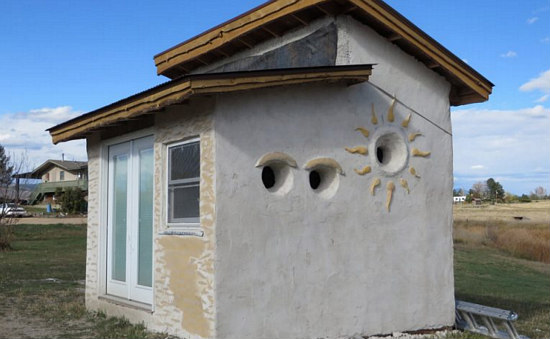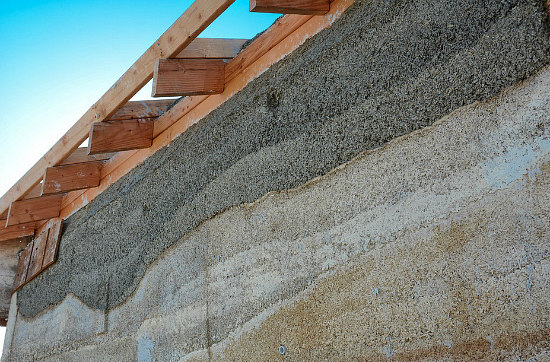Source: urbanturf.com

A tiny hemp house.
As various states around the country reconsider their approach to the controversial cannabis plant, its non-psychoactive variety is also gaining recognition for its many uses. Hemp, which typically has less than 0.3 percent THC, is somewhat of a super-crop, with uses from nutrition to clothing to construction materials.
One of the companies showing the practical applications of hemp as a construction material is Colorado’s Tiny Hemp Houses. As The Cannabist reports, Tiny Hemp Houses is a consulting company that assists clients in assembling their own tiny houses using “hempcrete” as a concrete substitute.

Hempcrete.
Hempcrete is composed of the hemp plant’s woody inner core combined with water and either lime, powdered limestone or chalk. It can then be molded into blocks or poured into frames similarly to traditional concrete; however, it is more flexible and doubles as an insulator.
“We seal up homes so tightly nowadays, and then we create moisture from our breath and our cooking and things like that,” Tiny Hemp Houses founder John Patterson explains. “That water sits on the surface of the wall and that’s where the molds and mildews grow. With a hemp-lime system, the house absorbs some of that moisture so it’s less likely you’ll have mold and mildew with the proper [hempcrete] recipe.”
The National Hemp Association touts hempcrete as a durable construction material that is resistant to fire and pests and doesn’t emit toxic fumes. However, the plant’s association with marijuana more generally makes it far less accessible than traditional construction materials.
In 2014, Congress passed an omnibus agricultural bill that legalized hemp production in any state that has passed its own laws permitting its cultivation. Currently, commercial hemp production is legal in fewer states than is medical marijuana.
The hemp industry points out that because of the lack of large-scale domestic hemp production, the US imports more than $500 million worth of hemp annually and most hemp products in the country are made from imported hemp. Tiny Hemp Houses is no exception; Patterson imports all of his hemp from Europe, packed as loose particles in 30- to 33-pound bags.
With his tiny homes averaging about 120-400 square feet, roughly two tons, or 125 bags, of imported hemp goes into constructing a single tiny house. For a 1,500 square-foot house, almost ten times as many bags of hemp would be needed.
This comment has been removed by the author.
ReplyDeleteThis comment has been removed by the author.
ReplyDeleteCBD Vape Oil Vape oil, on the flip side, is hashish oil that's derived from marijuana. Visit hrer for more intresting information on hempoilforpain.
ReplyDelete